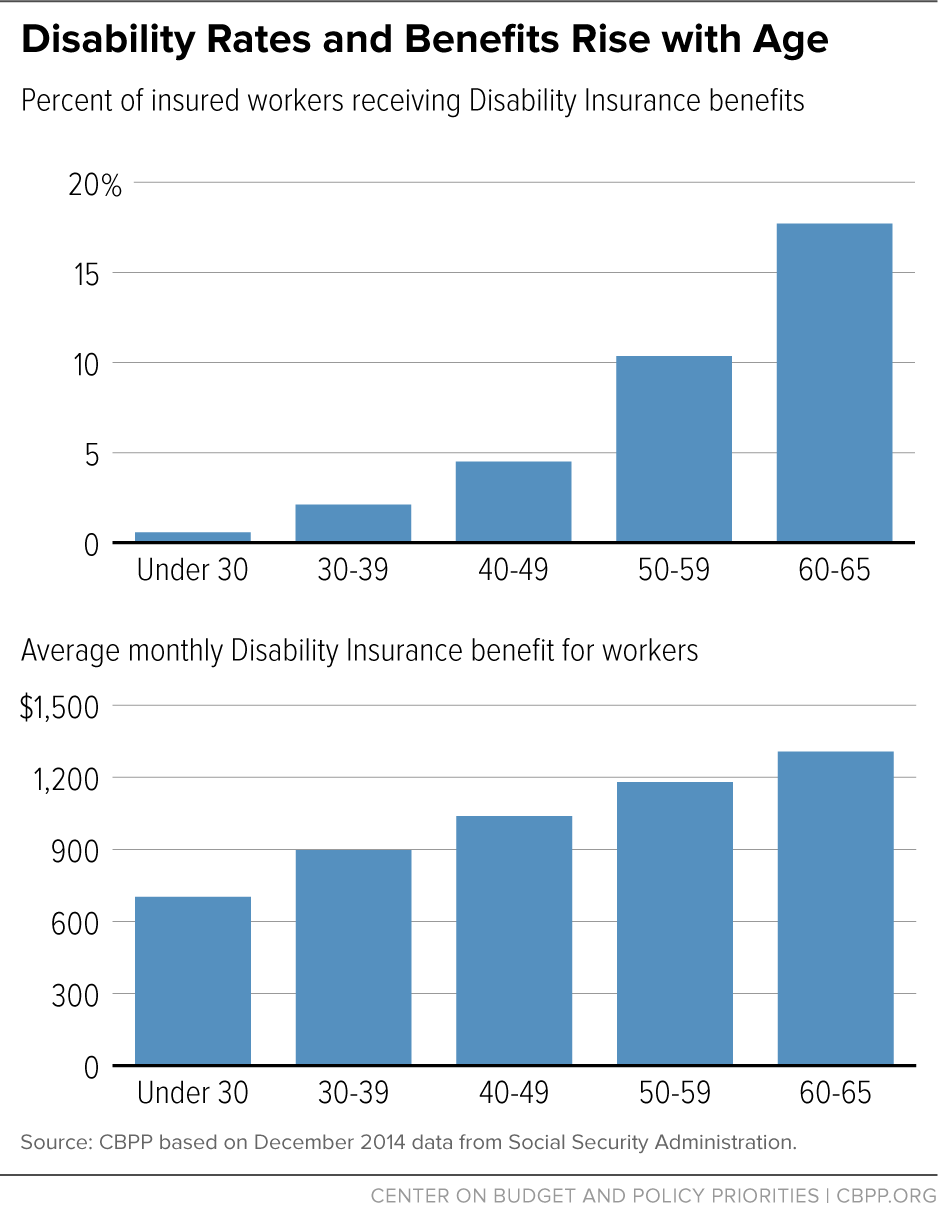off the charts
POLICY INSIGHT
BEYOND THE NUMBERS
BEYOND THE NUMBERS
We’ve noted that 70 percent of Social Security Disability Insurance (DI) beneficiaries are 50 or older, but DI is also important for the relatively few younger workers who qualify for it due to a severe and long-lasting medical impairment. More specifically:
- DI standards for young workers are especially strict. When the Social Security Administration (SSA) evaluates DI claims for workers aged 50 and up, it considers both their medical condition and their skills, education, and work history, because older workers with low skills are less likely to be able to adjust to other work. But SSA doesn’t consider younger workers’ skills and education, meaning it effectively expects young workers who are medically able to do any job — anywhere in the economy — to work.
- Very few young workers receive DI. Older workers are much likelier to receive DI than younger workers, both because disability prevalence rises with age and because of the stricter standards described above. (See graph.) The number of younger DI beneficiaries has been fairly steady for two decades, both in absolute numbers and as a share of the younger population. Although most DI beneficiaries can’t work, younger ones are somewhat likelier than older ones to find employment, so they are likelier to eventually leave the DI rolls via work.
- Young DI beneficiaries are severely disabled. Younger beneficiaries are likelier than older ones to have serious intellectual disabilities like Down Syndrome, psychotic disorders like schizophrenia, mood disorders like bipolar disorder, and sensorineural disorders like blindness, or to have a catastrophic injury. They are also far likelier to die than other people their age.
- Young DI beneficiaries have smaller benefits. That’s because they have a shorter work history and DI benefits reflect prior earnings. For example, beneficiaries under age 30 receive just over $700 a month, on average — around half the average for workers in their 60s. (See graph.) These benefits are low compared to the out-of-pocket costs of living with a disability, not to mention the future earnings that workers lose when they develop a serious disability before prime working age. Poverty rates are much higher for younger DI beneficiaries.
In short, DI provides modest but critical benefits to the few young workers who have disabilities so severe that they can qualify.
Topics:
Report
Disability Insurance Benefit Offset Could Harm Beneficiaries and Discourage Work
September 4, 2015
Stay up to date
Receive the latest news and reports from the Center

